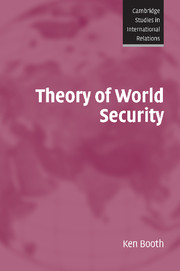10 - A long hot century
Published online by Cambridge University Press: 05 June 2012
Summary
We Have Worlds Inside Us
Edvard Munch, title of paintingWhatever decisions and patterns of behaviour emerge from the New Twenty Years' Crisis, human society, globally, will face a long hot century. It is the extent of the turmoil that remains to be seen. As presaged by the advent of superpower nuclear plenty in the 1950s, and then the densification of globalisation over the next four decades, global interaction and issues have increasingly turned human society into a community of fate. The concatenation of threats resulting from the interplay between the epochal, structural, and decisional crises takes this to a new level. In these circumstances, the rational goal for human society is to create a world security community of communities, where war is practically unthinkable, and in which global issues can be pursued as collectively as possible. We have worlds inside us, but also one outside to lose.
Some critics of this book's empirical thesis might say that were the dangers that have been highlighted (especially in chapters 1 and 9) to come about, they would swamp any suggestions that have been made (and will be offered in the present chapter) about dealing with them effectively. Such a criticism may well prove to be correct, but if it is, so much the worse for all of us. Other critics will complain that the extrapolation of morbid symptoms throughout the book has been too pessimistic, while the references to cosmopolitan possibilities have been too optimistic.
- Type
- Chapter
- Information
- Theory of World Security , pp. 427 - 470Publisher: Cambridge University PressPrint publication year: 2007

